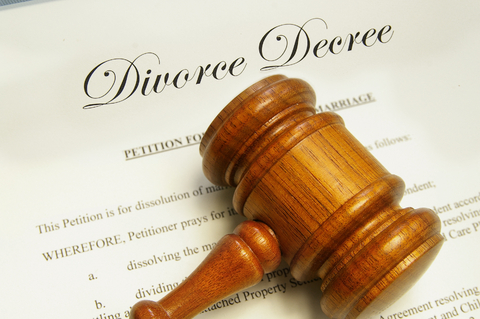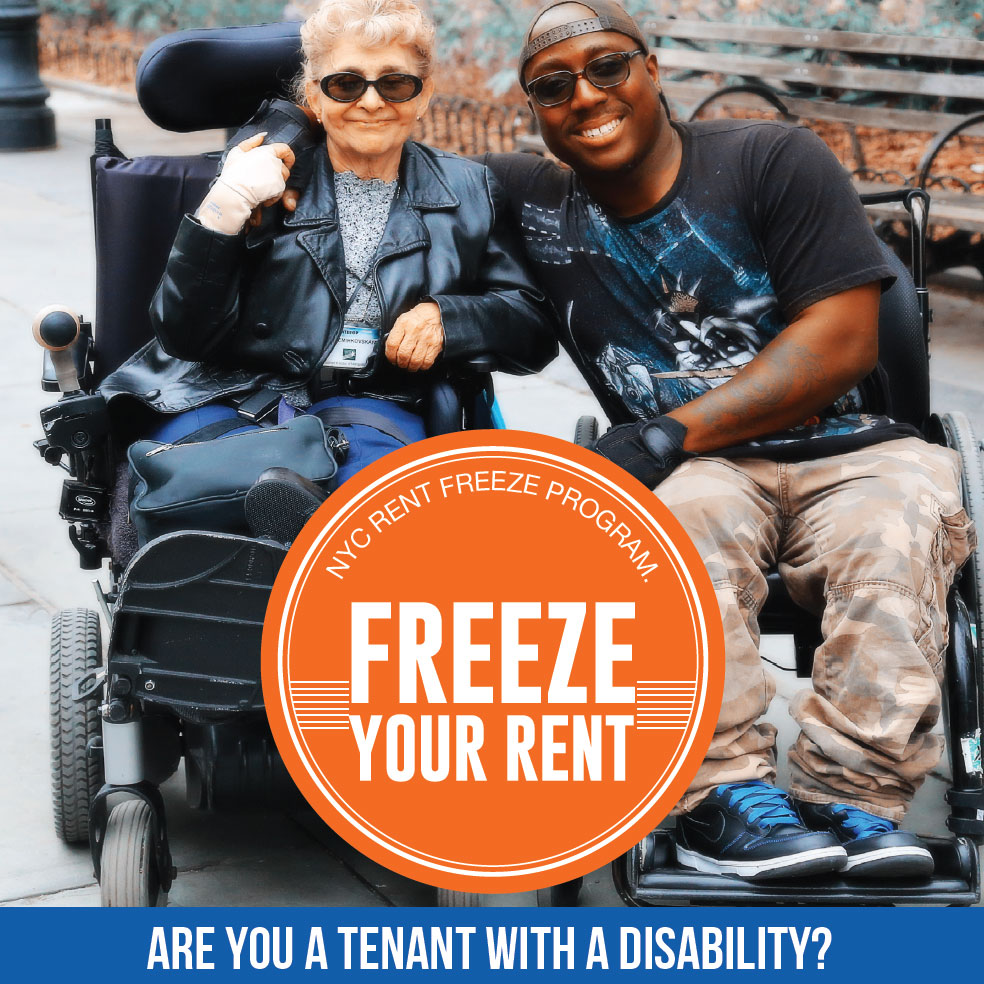Friday, October 30, 2015
SOME INTERESTING MATRIMONIAL DECISIONS - PROVING COMINGINGLED PROPERTY IS SEPARATE PROPERTY
Terasaka v. Terasaka, 130 A.D.3d 1474, 13 N.Y.S.3d 740 (Fourth Dept. 2015):
"We reject defendant's contention that Supreme Court erred in determining that the disputed trust account, funded with plaintiff's premarital property and property acquired by gift or inheritance, was plaintiff's separate property. It is well settled that separate property that is " ‘commingled with marital property or is subsequently titled in the joint names of the spouses is presumed to be marital property’ " (Gately v. Gately, 113 AD3d 1093, 1094, lv dismissed 23 NY3d 1048), and that "[t]he party seeking a finding of separate property has the burden of rebutting that presumption" (id.). Here, the uncontroverted evidence at trial "trace[d] the source of the [commingled] funds ... with sufficient particularity to rebut the presumption that they were marital property" (id. at 1903 [internal quotation marks omitted]). Defendant stipulated to the introduction in evidence of the forensic accounting report prepared by plaintiff's accountant "subject to whatever legal arguments either party may advance" regarding certain aspects of the report. Furthermore, plaintiff's accountant was the only expert witness who testified regarding the report and the ability to distinguish plaintiff's separate property from the parties' marital property even after they were commingled. Plaintiff also rebutted the presumption that the commingled separate property is now marital property by establishing that her transfer of her separate funds into a marital checking account for 95 days was merely a convenient means of transferring her separate funds into her trust account (see Noble v. Noble, 78 AD3d 1386, 1389). Furthermore, the marital checking account in which the funds at issue were commingled was held only in plaintiff's name (see Chamberlain v. Chamberlain, 24 AD3d 589, 593)."
Thursday, October 29, 2015
FREE LEGAL INFORMATION DAY TODAY
At the Nassau County Bar Association, today, October 29. 3-7 p.m.
Volunteer attorneys (like myself) to meet one-on-one with a Nassau resident to provide legal information and referral.
Please call Gale Berg 516-747-4070.
Volunteer attorneys (like myself) to meet one-on-one with a Nassau resident to provide legal information and referral.
Please call Gale Berg 516-747-4070.
Labels:
Free Clinic,
Nassau County Bar Association
Wednesday, October 28, 2015
SOME INTERESTING MATRIMONIAL DECISIONS - THE ATTORNEY FOR THE CHILD
Viscuso v. Viscuso, 129 A.D.3d 1679, 12 N.Y.S.3d 684 (Fourth Dept. 2015):
"In appeal No. 1, the mother contends that the Attorney for the Child (AFC) violated her ethical duty to determine the subject child's position and advocate zealously in support of the child's wishes, because the AFC advocated for a result that was contrary to the child's expressed wishes in the absence of any justification for doing so. We reject that contention. The Rules of the Chief Judge provide that an AFC "must zealously advocate the child's position" and that, "[i]f the child is capable of knowing, voluntary and considered judgment, the [AFC] should be directed by the wishes of the child, even if the [AFC] for the child believes that what the child wants is not in the child's best interests" (22 NYCRR 7.2[d][2]; see Matter of Swinson v. Dobson, 101 AD3d 1686, 1687, lv denied 20 NY3d 862). A contrary rule arises where, as here, "the [AFC] is convinced either that the child lacks the capacity for knowing, voluntary and considered judgment, or that following the child's wishes is likely to result in a substantial risk of imminent, serious harm to the child[. In such circumstances, the AFC] would be justified in advocating a position that is contrary to the child's wishes" (22 NYCRR 7.2[d][3]; see generally Matter of Carballeira v. Shumway, 273 A.D.2d 753, 755–756, lv denied 95 N.Y.2d 764). Here, "the evidence supports the court's conclusion that ‘to follow [the child's] wishes would be tantamount to severing her relationship with her father, and [that] result would not be in [the child's] best interest[s]’ " (Matter of Marino v. Marino, 90 AD3d 1694, 1696). We conclude that the mother's persistent and pervasive pattern of alienating the child from the father "is likely to result in a substantial risk of imminent, serious harm to the child" (22 NYCRR 7.2[d][3]), and we conclude that the AFC acted in accordance with her ethical duties."
Labels:
attorney for the child,
child custody,
divorce
Tuesday, October 27, 2015
CAN A CHILD BE A WITNESS IN A CIVIL CASE?
Question posed yesterday - if the matter is not a matrimonial, not a criminal action - what are the rules?
DELMARIE QUINONES, an Infant, by Her Mother and Natural Guardian, DELMA ALCANTARA, et al., Plaintiffs, v. CLIFTON CABALLERO et al., Defendants.10 Misc.3d 486 , 802 N.Y.S.2d 831 (Brnx. Co. 2005):
"V. The Child Witness
Plaintiff Quinones was 12 years old when she testified, recalling events when she was 10½ years old. To rely on a 12-year-old minor's testimony, the court must find she had sufficient capacity and intelligence, not only to comprehend the nature and obligations of the oath she took at her deposition, but also to recall and give an accurate account of what she saw or heard concerning the material events or circumstances she was questioned about. (People v Parks, 41 NY2d 36, 45 [1976]; People v Singleton, 284 AD2d 249 [1st Dept 2001]; People v Taylor, 244 AD2d 152, 153 [1st Dept 1997]; People v Bunche, 235 AD2d 271, 272 [1st Dept 1997].) Competency determinations, at least where the child witness is a complainant testifying against a defendant in a criminal action, rely on the trial court's opportunity to observe the witness, her demeanor and presence of mind, and undertake inquiries that disclose her capacity and intelligence. (People v Parks, 41 NY2d at 46; People v Taylor, 244 AD2d at 153.) "Impressions that may be validly drawn only from closehand personal observation cannot be 'photographed into the record' for later study." (People v Parks, 41 NY2d at 46.)
Against this authority, may the court in the context of summary judgment motions rely on a minor's testimony, already sworn, without actually observing the witness and conducting an independent inquiry to determine her competency? To rely on the minor's testimony as defendants seek, for purposes of granting them summary judgment and dismissing plaintiffs' action, obviously will preclude the trial judge from making this determination for purposes of the trial.
For purposes of the pending dispositive motions, plaintiff Quinones already was sworn and testified, without plaintiffs' or any other party's objection. While objections to a witness' competency are not waived by the failure to pose them before or during her deposition as she responded to questions (CPLR 3115 [d]), the action is now at a potentially dispositive juncture. Neither at the deposition, nor in the context of these motions, have plaintiffs or any other party raised any question, based on the opportunity for "closehand observation" they had at the deposition, that the minor did not have the capacity or intelligence to understand and respond to any question posed or to recall and accurately recount material facts. (People v Parks, 41 NY2d at 46.)
The context here departs from the authority governing criminal trials in critical respects. A deposition upon oral questions is not a discovery device in criminal actions (e.g., CPL 240.20), so there is no opportunity before the trial for "closehand observation" of a child witness and scrutiny of her capacity and intelligence. (People v Parks, 41 NY2d at 46.) Here, although the court had no such opportunity except study of the transcript and corroborating or conflicting evidence, the parties had a thorough opportunity. Concomitantly, there is no analogy in criminal actions to the summary dispositions upon admissible evidence, routinely sought, and for which the parties therefore must be prepared, in civil actions.
In addition, while one side, here defendants, seeks to rely on the minor's testimony against the other side, unlike the prosecution relying on its complaining witness as an accuser against the other side, defendants rely not on their own witness, but on the other side's own witness, plaintiff Quinones. Most critically, and perhaps the explanation for plaintiffs' reluctance to raise a competency issue, if plaintiffs are to prevail, they must rely on the minor's testimony as well. Although her mother, plaintiff Alcantara, was present for the material events, neither side has found her recollection and account sufficiently useful to rely on her, despite her capacity as an adult, to support the parties' positions. Hence the minor is the witness on whom all parties must rely if they are to establish their claims or defenses.
Keeping the age of the key witness foremost in mind, the court finds no hint in the record that she was confused by the questions posed to her or had any difficulty expressing her recollection of the material events or her intended meaning. Nothing in the plaintiff mother's testimony or anywhere else in the record is in any way inconsistent with or otherwise casts any doubt on the certainty of the minor plaintiff's testimony. (See Totan v Board of Educ. of City of N.Y., 133 AD2d 366, 369 [2d Dept 1987].) In fact the mother corroborates both that the snow was "spread" over the part of the sidewalk where her daughter fell (affirmation of David Holmes, exhibit G, at 17), and that "more snow" had fallen "on top" of the snow that had been shoveled and salted. (Id. at 20.) This careful scrutiny provides assurance even where no issue was raised regarding the daughter's competency.
In these circumstances, in the context of summary judgment motions, where the parties against whom a minor's testimony is used raised no objection to the testimony and also must rely on it, the court, after scouring the record for uncertainty in the testimony and finding none, may rely on a sworn 12 year old's account, without her appearance and further examination. Consequently, based on the admission that no shoveling was observed in the area where plaintiff Quinones fell and that no additional salt had been spread there since she had walked there hours earlier, the Caballero defendants, at least, establish defendants' freedom from liability."
DELMARIE QUINONES, an Infant, by Her Mother and Natural Guardian, DELMA ALCANTARA, et al., Plaintiffs, v. CLIFTON CABALLERO et al., Defendants.10 Misc.3d 486 , 802 N.Y.S.2d 831 (Brnx. Co. 2005):
"V. The Child Witness
Plaintiff Quinones was 12 years old when she testified, recalling events when she was 10½ years old. To rely on a 12-year-old minor's testimony, the court must find she had sufficient capacity and intelligence, not only to comprehend the nature and obligations of the oath she took at her deposition, but also to recall and give an accurate account of what she saw or heard concerning the material events or circumstances she was questioned about. (People v Parks, 41 NY2d 36, 45 [1976]; People v Singleton, 284 AD2d 249 [1st Dept 2001]; People v Taylor, 244 AD2d 152, 153 [1st Dept 1997]; People v Bunche, 235 AD2d 271, 272 [1st Dept 1997].) Competency determinations, at least where the child witness is a complainant testifying against a defendant in a criminal action, rely on the trial court's opportunity to observe the witness, her demeanor and presence of mind, and undertake inquiries that disclose her capacity and intelligence. (People v Parks, 41 NY2d at 46; People v Taylor, 244 AD2d at 153.) "Impressions that may be validly drawn only from closehand personal observation cannot be 'photographed into the record' for later study." (People v Parks, 41 NY2d at 46.)
Against this authority, may the court in the context of summary judgment motions rely on a minor's testimony, already sworn, without actually observing the witness and conducting an independent inquiry to determine her competency? To rely on the minor's testimony as defendants seek, for purposes of granting them summary judgment and dismissing plaintiffs' action, obviously will preclude the trial judge from making this determination for purposes of the trial.
For purposes of the pending dispositive motions, plaintiff Quinones already was sworn and testified, without plaintiffs' or any other party's objection. While objections to a witness' competency are not waived by the failure to pose them before or during her deposition as she responded to questions (CPLR 3115 [d]), the action is now at a potentially dispositive juncture. Neither at the deposition, nor in the context of these motions, have plaintiffs or any other party raised any question, based on the opportunity for "closehand observation" they had at the deposition, that the minor did not have the capacity or intelligence to understand and respond to any question posed or to recall and accurately recount material facts. (People v Parks, 41 NY2d at 46.)
The context here departs from the authority governing criminal trials in critical respects. A deposition upon oral questions is not a discovery device in criminal actions (e.g., CPL 240.20), so there is no opportunity before the trial for "closehand observation" of a child witness and scrutiny of her capacity and intelligence. (People v Parks, 41 NY2d at 46.) Here, although the court had no such opportunity except study of the transcript and corroborating or conflicting evidence, the parties had a thorough opportunity. Concomitantly, there is no analogy in criminal actions to the summary dispositions upon admissible evidence, routinely sought, and for which the parties therefore must be prepared, in civil actions.
In addition, while one side, here defendants, seeks to rely on the minor's testimony against the other side, unlike the prosecution relying on its complaining witness as an accuser against the other side, defendants rely not on their own witness, but on the other side's own witness, plaintiff Quinones. Most critically, and perhaps the explanation for plaintiffs' reluctance to raise a competency issue, if plaintiffs are to prevail, they must rely on the minor's testimony as well. Although her mother, plaintiff Alcantara, was present for the material events, neither side has found her recollection and account sufficiently useful to rely on her, despite her capacity as an adult, to support the parties' positions. Hence the minor is the witness on whom all parties must rely if they are to establish their claims or defenses.
Keeping the age of the key witness foremost in mind, the court finds no hint in the record that she was confused by the questions posed to her or had any difficulty expressing her recollection of the material events or her intended meaning. Nothing in the plaintiff mother's testimony or anywhere else in the record is in any way inconsistent with or otherwise casts any doubt on the certainty of the minor plaintiff's testimony. (See Totan v Board of Educ. of City of N.Y., 133 AD2d 366, 369 [2d Dept 1987].) In fact the mother corroborates both that the snow was "spread" over the part of the sidewalk where her daughter fell (affirmation of David Holmes, exhibit G, at 17), and that "more snow" had fallen "on top" of the snow that had been shoveled and salted. (Id. at 20.) This careful scrutiny provides assurance even where no issue was raised regarding the daughter's competency.
In these circumstances, in the context of summary judgment motions, where the parties against whom a minor's testimony is used raised no objection to the testimony and also must rely on it, the court, after scouring the record for uncertainty in the testimony and finding none, may rely on a sworn 12 year old's account, without her appearance and further examination. Consequently, based on the admission that no shoveling was observed in the area where plaintiff Quinones fell and that no additional salt had been spread there since she had walked there hours earlier, the Caballero defendants, at least, establish defendants' freedom from liability."
Labels:
affidavits,
child,
LITIGATION,
Witness,
Witness Credibility
Monday, October 26, 2015
SOME INTERESTING MATRIMONIAL DECISIONS - DOWNWARD MODIFICATION OF MAINTENANCE
Kaplan v. Kaplan, 130 A.D.3d 576, 13 N.Y.S.3d 184 (Second Dept. 2015):
"The Supreme Court properly granted that branch of the plaintiff's motion which was for a downward modification of his maintenance obligation. The plaintiff demonstrated that his loss of employment was unavoidable, that he made a good-faith effort to obtain employment commensurate with his qualifications and experience, and that continued enforcement of the maintenance obligation as set forth in the parties' separation agreement would create an "extreme hardship" (cf. Lewis v. Lewis, 43 AD3d 462, 463–464; see Beard v. Beard, 300 A.D.2d 268, 269; Pintus v. Pintus, 104 A.D.2d 866, 868–869). The Supreme Court also providently exercised its discretion in imputing $450,000 in income to the plaintiff based upon, inter alia, his educational background and employment history (see Matter of Julianska v. Majewski, 78 AD3d 1182, 1183; Friedman v. Friedman, 309 A.D.2d 830, 831), and reducing his maintenance obligation to the defendant from $16,666 per month to $6,375 per month, taking into consideration, inter alia, the relevant factors enumerated in Domestic Relations Law § 236(B)(6)(a) (see Baron v. Baron, 71 AD3d 807, 809; Otto v. Otto, 207 A.D.2d 530, 532).
However, the Supreme Court erred in directing that the plaintiff recoup the overpayment of his maintenance obligation made since the filing of his motion as a credit against his future maintenance obligation. Generally, as a matter of public policy, a payor spouse is not entitled to restitution or recoupment of maintenance payments (see Fox v. Fox, 306 A.D.2d 583; Vigliotti v. Vigliotti, 260 A.D.2d 470, 471; Samu v. Samu, 257 A.D.2d 656; Du Jack v. Du Jack, 243 A.D.2d 908, 909; Matter of Klein v. Klein, 58 A.D.2d 811), and, contrary to the plaintiff's contention, this case does not fall outside the general rule (see Arcabascio v. Arcabascio, 48 AD3d 606; cf. Stimmel v. Stimmel, 163 A.D.2d 381; Jacobs v. Patterson, 143 A.D.2d 397, 398; Vigliotti v. Vigliotti, 260 A.D.2d at 471)."
Labels:
divorce,
Modification,
Spousal Maintenance
Friday, October 23, 2015
2015 PETER JAMES JOHNSON NATIONAL CIVIL RIGHTS COMPETITION
Last night, I was honored to be a presiding judge in one of the competitions at Nassau County Supreme Court. My best wishes to all the schools participating.
Labels:
St. John 's Law School
Thursday, October 22, 2015
STUDENT MENTORING - NASSAU COUNTY
Today is another day of volunteering as a student mentor. This program is offered through the Nassau County Bar Association:
"Student Mentors
"Student Mentors
Provide
valuable adult guidance and serve as a role model for at-risk middle
school students in one-on-one sessions at a local middle school. The
commitment is twice a month for less than an hour, but the rewards you
receive are immeasurable. Mentors are always in demand.
→Contact Demi Tsiopelas at NCBA 516-747-4070 or dtsiopelas@nassaubar.org"
Wednesday, October 21, 2015
LAWYERS WHO COMMIT CRIMES
After reading the recent news of the arrest of one Long Island attorney arrested for stealing escrow funds, I came across this article from the NYLJ reprinted the the blog "Legal Ethics":
http://nylegalethics.attorney/lawyers-who-commit-crimes-disciplinary-consequences/
Labels:
Attorneys,
Criminal Acts,
Disbarment,
Discipline,
Ethics
Tuesday, October 20, 2015
STATUE OF LIMITATIONS - FORECLOSURE
Headline in today's Newsday about Suffolk County Supreme Court Justice Rebolini dismissing action in foreclosure due to bank's delay.
To read the full decision in U.S. BANK NA vs. PARISI, JAYNE, Index. 066885/2014, Suffolk Supreme Court, it is available on e-courts and is posted online at
http://stopforeclosurefraud.com/2015/10/15/u-s-bank-v-parisi-nysc-another-statute-of-limitations-foreclosure-dismissal-granted/
Monday, October 19, 2015
WARNING - THIS DECISION IS GRAPHIC
Many years ago, a member of my family died under unusual circumstances. An autopsy was performed by the NYC Medical Examiner. But I was not aware of the procedures and policies as confirmed by the Court of Appeal this June in Shipley v. City of New York, 2015 NY Slip Op 4791 (COA NY 2015).
Here is a summary of the case from JUSTIA:
"Jesse Shipley (the decedent), a seventeen-year-old high school student, was killed in an automobile accident. During an authorized autopsy, the medical examiner removed, among other organs, the decedent’s brain, fixed it in formalin, and placed it in the autopsy room for further examination by a neuropathologist. The decedent’s body was subsequently retrieved from the mortuary, and a funeral was held. Approximately three months later, the decedent’s family discovered that the decedent’s brain had been retained by the medical examiner. Plaintiffs, the decedent’s family, commenced this action against the City of New York alleging negligent infliction of emotional distress resulting from the mishandling and withholding of their son’s brain. Supreme Court granted Plaintiffs’ motion for a directed verdict as to liability. After a trial, Plaintiffs were awarded $1 million in damages. That amount was subsequently reduced. The Court of Appeals reversed, holding that a medical examiner is not legally required to notify next of kin that organs, tissues or other specimens have been removed from the body during a lawful autopsy and retained by the medical examiner after such an autopsy."
Thus, when faced with this unfortunate situation and preparing for funeral, one must immediately inquire to the examiner as to what was done and what can be returned.
NOTE: How did the Shipley family know that their son's brain was retained by the medical examiner? After Jesse's death, "forensic science students from decedent's high school took a field trip to the Richmond County Mortuary. During a tour of the autopsy room, some of the students observed the specimen jar holding decedent's brain. This information was relayed to decedent's sister, Shannon, who told her parents."
Friday, October 16, 2015
REFLECTING ON A DISSENT IN APPELLATE DIVISION DIVORCE APPEAL
Lessons learned:
1. If appellate division judges differ, clients should be aware that although their position has substantial merit, nevertheless, they may not prevail in court.
2. A teenager will not always get to reside with the parent of his/her choice
Sheridan v. Sheridan, 129 A.D.3d 1567, 12 N.Y.S.3d 434 (Fourth Dept.2015):
"All concur except CENTRA, J.P., and PERADOTTO, J., who dissent and vote to modify in accordance with the following memorandum:
We respectfully dissent in appeal No. 1 because, in our view, Supreme Court's determination awarding sole legal and physical custody of the parties' child to plaintiff mother lacks a sound and substantial basis in the record (see Matter of Bryan K.B. v. Destiny S.B., 43 AD3d 1448, 1449). We would therefore modify the order in appeal No. 1 by awarding sole custody to defendant father with visitation to the mother and remit the matter to Supreme Court for a different justice to fashion an appropriate visitation schedule (see id. at 1451; see also Sitts v. Sitts, 74 AD3d 1722, 1723–1724, lv dismissed 15 NY3d 833, lv denied 18 NY3d 801). We agree with the majority's resolution of appeal No. 2.
Although, as a general rule, the custody determination of a trial court is entitled to great deference (see Eschbach v. Eschbach, 56 N.Y.2d 167, 173–174), "[s]uch deference is not warranted ... where[, as here,] the custody determination lacks a sound and substantial basis in the record" (Fox v. Fox, 177 A.D.2d 209, 211–212; see Sitts, 74 AD3d at 1723). Ultimately, we must determine what is in the child's best interests " ‘and what will best promote [his] welfare and happiness' " (Eschbach, 56 N.Y.2d at 171). In making that determination "numerous factors are to be considered, including the continuity and stability of the existing custodial arrangement, the quality of the child's home environment and that of the parent seeking custody, the ability of each parent to provide for the child's emotional and intellectual development, the financial status and ability of each parent to provide for the child, and the individual needs and expressed desires of the child" (Bryan K.B., 43 AD3d at 1450 [internal quotation marks omitted]; see Eschbach, 56 N.Y.2d at 171–173).
In our view, the court erred in weighing those important factors, and its determination, therefore, lacks a sound and substantial basis in the record. Most glaringly, the court failed to give sufficient weight to the child's preference to live with the father (see Matter of Rivera v. LaSalle, 84 AD3d 1436, 1437–1439). As the majority acknowledges, the expressed wishes of the child are "entitled to great weight" in light of his age and relative maturity (Veronica S. v. Philip R.S., 70 AD3d 1459, 1460; see Matter of Mercado v. Frye, 104 AD3d 1340, 1342, lv denied 21 NY3d 859).
The child, who was already 13 at the time of the court's order in appeal No. 1, is now 15 years old. For the last six years, he has consistently expressed his desire to live with his father, and the Attorney for the Child on this appeal asserted in her brief and at oral argument that the child still wants to live with his father. The child's preference was expressed to the court-appointed custodial evaluator in his mother's presence. The custodial evaluator agreed that the child's disclosure in front of his mother was an indication that his preference was genuine. In addition, the custodial evaluator testified that the child's preference did not appear to be the result of influence or coercion by the father (cf. generally Eschbach, 56 N.Y.2d at 173). Although the custodial evaluator further testified that the child's preference reflected "his wish to be loyal to the father [and] his wish to have his father be happy," we do not view such loyalty and attachment as a reasonable basis for disregarding the child's preference and maintaining custody with the mother.
The court's determination also lacks a sound and substantial basis in the record insofar as that determination is based on the conclusion that the mother was better equipped to handle the child's psychological and emotional needs. Although the mother has been the child's primary custodial parent for many years, her relationship with him has substantially deteriorated. The record reflects the mother's inability to handle the normal challenges of raising a teenager and her apparent failure to deal with those challenges without the use of force or profanity. The mother's difficulty in dealing with the child is further demonstrated by the fact that she was often compelled to resort to contacting the father or others to assist in controlling the child's outbursts or "to get [the child] to do things." The custodial evaluator testified that the father, unlike the mother, had "no issues controlling [the child's] conduct ." The progressively deteriorating and antagonistic relationship between the child and his mother is further evidenced by incidents in which the child kicked a hole in a wall at his mother's house and threw a phone at his mother. The antagonism between the child and his mother demonstrates "a total breakdown in communication ... requir[ing] a change in custody" (Eschbach, 56 N.Y.2d at 172; see Matter of Maute v. Maute, 228 A.D.2d 444, 444–445).
The total breakdown in communication is further exemplified by evidence of the mother's physical violence against the child, and the court failed to address and adequately account for the undisputed evidence of physical confrontations between the mother and the child. For example, the mother admitted to slapping the child's face "[a] couple times" when he "got[] mouthy," disrespectful, or rude, and she testified that she was justified in striking the child for that reason. The court was required to consider the effect of domestic violence upon the best interests of the child (see Matter of Moreno v. Cruz, 24 AD3d 780, 781, lv denied 6 NY3d 712, quoting Domestic Relations Law § 240[1]), and it failed to do so here. We conclude that the evidence of domestic violence further supports an award of sole custody to the father (see Moreno, 24 AD3d at 781; see also Matter of Caughill v. Caughill, 124 AD3d 1345, 1347).
The court also determined that the mother was more able and willing to meet the child's educational needs. During the academic year before the mother commenced her action for divorce, when the child was in second grade, the child achieved a final grade of A in all of his academic subjects. Since then, he has received more B and C grades primarily, it seems, because of a lack of discipline and focus. Whatever the reason, be it the ineffectiveness of the mother or the rebellion of the child, it is undeniable that his academic performance has declined while the mother has been the primary custodian.
"It is well settled that ‘[t]he authority of the Appellate Division in matters of custody is as broad as that’ of the trial court" (Sitts, 74 AD3d at 1723, quoting Matter of Louise E.S. v. W. Stephen S., 64 N.Y.2d 946, 947). "[W]here ... the record is sufficient for this Court to make a best interests determination ..., we will do so in the interests of judicial economy and the well-being of the child" (Caughill, 124 AD3d at 1346 [internal quotation marks omitted]). We conclude that the record, which includes two Lincoln hearings, is sufficient for us to make a best interests determination here (see Matter of Cole v. Nofri, 107 AD3d 1510, 1512, appeal dismissed 22 NY3d 1083) and, upon review of the relevant factors, we further conclude that it is in the child's best interests to award sole legal and physical custody to the father.
Finally, we note that the evidence to support an award of custody to the father would likely have been even stronger had the trial level attorney for the child (AFC) properly acted as an advocate for her client. Contrary to the position of the majority, we conclude that the AFC "failed to fulfill [her] essential obligation" to her client (Matter of Mark T. v. Joyanna U., 64 AD3d 1092, 1095). The Rules of the Chief Judge provide that an AFC "must zealously advocate the child's position ... even if the [AFC] believes that what the child wants is not in the child's best interests," unless the AFC "is convinced either that the child lacks the capacity for knowing, voluntary and considered judgment, or that following the child's wishes is likely to result in a substantial risk of imminent, serious harm to the child" (22 NYCRR 7.2 [d][2], [3]; see Matter of Swinson v. Dobson, 101 AD3d 1686, 1687, lv denied 20 NY3d 862). Because neither exception allowing the AFC to substitute her own judgment for that of the child is implicated here, she was obligated to zealously advocate the child's position (see Swinson, 101 AD3d at 1687; Mark T., 64 AD3d at 1095; cf. Matter of Rosso v. Gerouw–Rosso, 79 AD3d 1726, 1728), and she failed to do so.
Despite the child's consistently expressed desire to live with the father, at trial the AFC objected repeatedly during direct-examination of the father and cross-examination of the mother, but did not object during direct examination of the mother or cross-examination of the father. The AFC also called as a witness a custodial evaluator whose recommendation was directly contrary to the child's preference to live with the father. We cannot agree with the majority that the AFC fulfilled her obligation to her client by merely informing the court of the child's wishes "without recommending any finding to the contrary." In our view, the AFC merely parroted the child's position to the court in a perfunctory fashion, and did not fulfill her ethical obligation to act as a zealous advocate for the child and to give voice to the child's wishes (see 22 NYCRR 7.2[b], [d]; see generally Mark T ., 64 AD3d at 1094–1095; Matter of Dominique A.W., 17 AD3d 1038, 1039–1040, lv denied 5 NY3d 706). The AFC's inadequate representation of the child at the trial level further justifies reversing the court's custody determination in appeal No. 1."
Labels:
child custody,
divorce
Thursday, October 15, 2015
NYC SENIORS AND NYC RESIDENTS WITH DISABILITIES: DID YOU KNOW?..
Tenants who qualify for the NYC Rent Freeze Program for Seniors (SCRIE) and Tenants that qualify for the NYC Rent Freeze Program for Tenants with Disabilities (DRIE) can have their rent frozen and be exempt from future rent increases. For more information you can download "A GUIDE FOR TENANTS - Senior Citizens (62 and over) and People with Disabilities". "
Labels:
Disability,
DRIE,
New York City,
Renting Issues,
SCRIE,
Senior Citizen
Wednesday, October 14, 2015
FREE SENIOR LEGAL CLINIC TODAY AT NASSAU COUNTY BAR ASSOCIATION
The next Senior Clinic is scheduled for today 9:30-11am at the Nassau County Bar Association, 15th West Streets, Mineola, NY 11501.
I will be one of the volunteer lawyers.
Tuesday, October 13, 2015
FEMA REPAYMENT PROCESS
In yesterday's Newsday, the front page story centered on FEMA's claw back attempts on Sandy victims who received overpayments.
We all know that in Louisiana, etc. was at the forefront of FEMA issues due to Hurricane Katrina and a Louisiana legal group put together a pamphlet "FEMA Wants Money Back? Self-Help Guide to the Debt Repayment Process":
https://www.google.com/search?q=how+to+appeal+FEMA+claim+for+overpayment&ie=utf-8&oe=utf-8
Labels:
appeals,
FEMA,
Overpayments
Friday, October 9, 2015
MORTGAGE BROKER GROUPS AND TRID
It would appear there is an attempt is being made by mortgage broker groups to delay the penalty period for TRID non-compliance:
http://campaign.r20.constantcontact.com/render?ca=a66799fa-d4f0-4585-a48a-8f731ffedc38&c=8db0f940-35c2-11e3-b42a-d4ae52a45a09&ch=8ea89fb0-35c2-11e3-b525-d4ae52a45a09
I attended a TRID training seminar recently and the consensus is that because residential sales must be handled differently, some of the past practices will no longer apply. Buyers, and Sellers, should now be made aware that this cannot be an accelerated process and attorneys should advise Sellers and Buyers of the effect of the TRID rules.
Labels:
Mortgage Financing,
Residential Sale,
TRID
Thursday, October 8, 2015
STUDENT MENTORS FOR NASSAU COUNTY BAR ASSOCIATION
Today I begin my second year of volunteering as a student mentor. This program is offered through the Nassau County Bar Association:
"Student Mentors
Provide
valuable adult guidance and serve as a role model for at-risk middle
school students in one-on-one sessions at a local middle school. The
commitment is twice a month for less than an hour, but the rewards you
receive are immeasurable. Mentors are always in demand.
→Contact Demi Tsiopelas at NCBA 516-747-4070 or dtsiopelas@nassaubar.org"
Wednesday, October 7, 2015
WINDOW TINTING IN NEW YORK
My kids asked me about this and I found this information:
From the DMV website:
"Can I have tinted windows on my vehicle?
It depends. Section 375 (12-a) of the NYS Vehicle and Traffic Law does not allow a windshield or front side windows that are dark. The windshield and front side windows cannot block more than 30% of the light. Seventy percent or more of the light from the outside must pass through the window. This law also applies to the rear window unless the vehicle has outside rear-view mirrors on both sides. The mirrors must give the driver a full and clear view behind the vehicle.
If the vehicle is classified as a station wagon, sedan, hardtop, coupe, hatchback or convertible, the rear side windows must also allow at least seventy percent of light from the outside to pass through the window.
It is illegal to sell, offer for sale, or install glass that does not comply with this law. It is illegal to operate a vehicle with glass that does not comply with this law.
If you have a medical condition that requires you to have tinted vehicle windows, you can request an exemption from the law. Request form MV-80W from a DMV Office or Call Center."
Some further DMV links:
1. On obtaining convictions and standard of proof: http://dmv.ny.gov/forms/opinion1-09.pdf
2. On obtaining an exemption for medical reasons: http://dmv.ny.gov/forms/mv80w.pdf
Tuesday, October 6, 2015
FROM THE CFPB RE: MORTGAGE APPLICATIONS

"Good afternoon,
Consumers applying for most mortgages now face less stress when
shopping for their loan since our new rule and forms took effect on October 3.
We made these changes to ease the process of taking out a mortgage, help you
save money, and ensure you Know Before You Owe.
Learn more about Know Before You Owe: consumerfinance.gov/know-before-you-owe
In addition to making it easier to understand these forms, the
Know Before You Owe mortgage disclosure rule:
- Combines four overlapping disclosure forms into two forms, the Loan Estimate and the Closing Disclosure.
- Allows you time to review your Closing Disclosure to ensure you fully understand terms and obligations.
Check out how these new
Know Before You
Owe measures will better serve consumers and
lenders today: consumerfinance.gov/know-before-you-owe
Thank you,
Consumer Financial Protection Bureau"
Monday, October 5, 2015
FORECLOUSRE/SANDY CLINIC TODAY AT NCBA
I will be volunteering today, Monday October 5, at the Nassau County Bar Association's free clinic for Mortgage Foreclosure, Bankruptcy and Superstorm Sandy issues.
For more information, contact Nassau County Bar Association, 15th and West Streets, Mineola, NY 11501 at (516) 747-4070
Friday, October 2, 2015
TRID STARTS TOMORROW
October 3 is the start date for the new Loan Estimate and Closing Disclosure requirements a/k/a the “Truth-in-Lending RESPA Integrated Disclosure” Rule a/k/a TRID that will combine two existing disclosure regimes under TILA and RESPA and make mortgage disclosure easier for consumers to understand and use.
According to the Consumer Financial Protection Bureau: http://www.consumerfinance.gov/blog/know-before-you-owe-making-the-mortgage-process-easier-for-you/
For some other views on this see:
http://www.wsj.com/articles/new-mortgage-rules-may-spark-delays-frustration-1443519000
https://www.parjustlisted.com/top-ten-things-realtors-need-to-know-about-respa/
Thursday, October 1, 2015
DOMESTIC VIOLENCE AWARENESS MONTH
October is Domestic Violence Awareness Month and the National Coalition
Against Domestic Violence has called for a national day of awareness and will
Take a Stand Against Domestic Violence On October 1,
2015 in Washington DC and across the nation. There will be a a national
"moment of silence" for the victims of domestic violence at 11:00 am
EST.
For more information, see http://www.ncdsv.org/images/NCADV_Take-a-stand-against-DV_10-1-2015.pdf
For more information, see http://www.ncdsv.org/images/NCADV_Take-a-stand-against-DV_10-1-2015.pdf
Labels:
Domestic Violence
Subscribe to:
Posts (Atom)





















